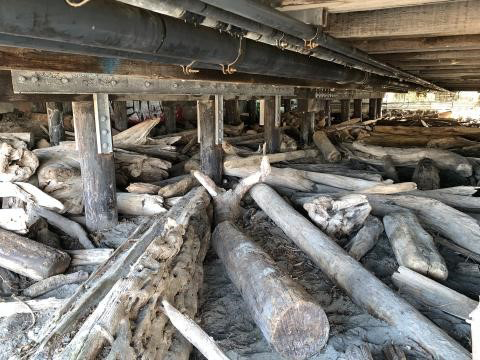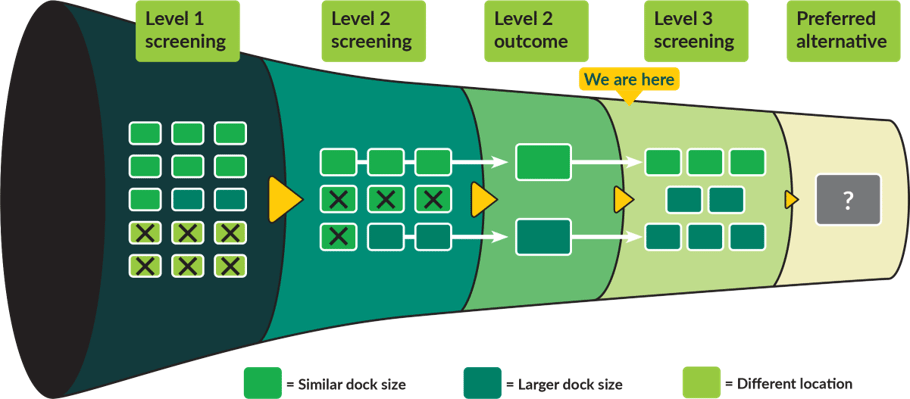The Fauntleroy ferry terminal in West Seattle serves nearly three million riders per year, supporting Washington State Ferries’ “Triangle” route between Fauntleroy, Southworth and Vashon Island. The terminal was built in the 1950s and needs significant work to preserve the terminal and maintain safe and reliable ferry service.
The terminal faces several challenges, including:
- Aging, seismically vulnerable parts of the terminal that are overdue for replacement.
- Rising sea levels risk damage to the terminal structures from debris during future high tides.
- Vehicles backing up along Fauntleroy Way SW with only one lane serving two destinations.
- A small dock with capacity for about 84 cars serves three Issaquah Class ferries that hold 124 cars each.

The purpose of WSF’s SR 160 – Fauntleroy Ferry Terminal – Trestle and Transfer Span Replacement Project is to improve operations on the Triangle ferry route and preserve and upgrade the terminal facilities consistent with WSF’s 2040 Long Range Plan. All terminal alternatives WSF is considering will address core issues to maintain safe, reliable and efficient service for our customers.
Project timeline

We are using a Planning and Environmental Linkages (PEL) process for the Fauntleroy terminal replacement project. This early planning phase helps us identify transportation issues, environmental concerns, community values and economic goals early in project planning. During this phase, the project team is using input from the community and our Community, Executive and Technical Advisory Groups to refine the range of concepts, which we call “alternatives.” Later in 2024, WSF will select a preferred alternative to study in the environmental review phase.

WSF completed Level 1 and Level 2 screening, resulting in two main options: replacing the terminal with a similar size dock at the existing location, or expanding the terminal. WSF has since refined these two main options into a set of six detailed alternatives for further evaluation and screening. We are now in the Level 3 screening process where we are considering things like traffic conditions, cost estimates, environmental considerations and ways to make the terminal safer and more efficient for everyone. We are also studying Good To Go! and advance ticketing as potential options to improve operational efficiency.
After completing the PEL study, we will begin the National and State Environmental Policy Act (NEPA/SEPA) environmental review process. The environmental review process allows us to study potential environmental impacts and benefits of the preferred alternative in more detail. There will be opportunities for community engagement and input throughout the project.
Community engagement
WSF is engaging Triangle route communities, including three advisory groups, to help shape the new terminal. Since the start of the PEL study in March 2021, WSF has received over 1,000 comments and hosted four virtual community meetings, 23 advisory group meetings and one online open house. Comments and engagement from the community will continue to help the team refine the range of alternatives. WSF will keep community members informed of project updates and opportunities to share input as the team works to identify a preferred alternative.